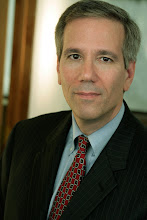However, challenges come in exploiting this information to ensure better patient outcomes and to create engaged and enhanced physician-patient partnerships. What happens when the best technical finery is set up for the dance and the partners fail to fox trot?
The recent demise of Revolution Health is a good example of what happens when hundreds instead of millions of patients sign up to fill out their Personal Health Records (PHRs). Founded with great fanfare by Steve Case of AOL fame, the PHR aspect of Revolution Health failed to gain any patient traction. General Manager Marjorie Martin said that “most patient rely on their physicians to do their record-keeping. They don’t feel the need to make a change. And it is still a fairly laborious process.”
Facilitation of HCIT will also involve developing access portals that go beyond checking CPT (Current Procedural Terminology) diagnostic codes and utilizing cutting edge mobile hardware (viz. IPads and Smartphones). Educating physicians is also critical. According to the American Medical Association, 50% of US physicians are 55 years old or older and will be at retirement age in ten years. As these doctors age into retirement, the US could have 40,000 less doctors for, according to current demographics, a burgeoning population of 42 million more Americans. The burden is creating a system for that will enhance productivity for a smaller medical delivery cohort.

No comments:
Post a Comment